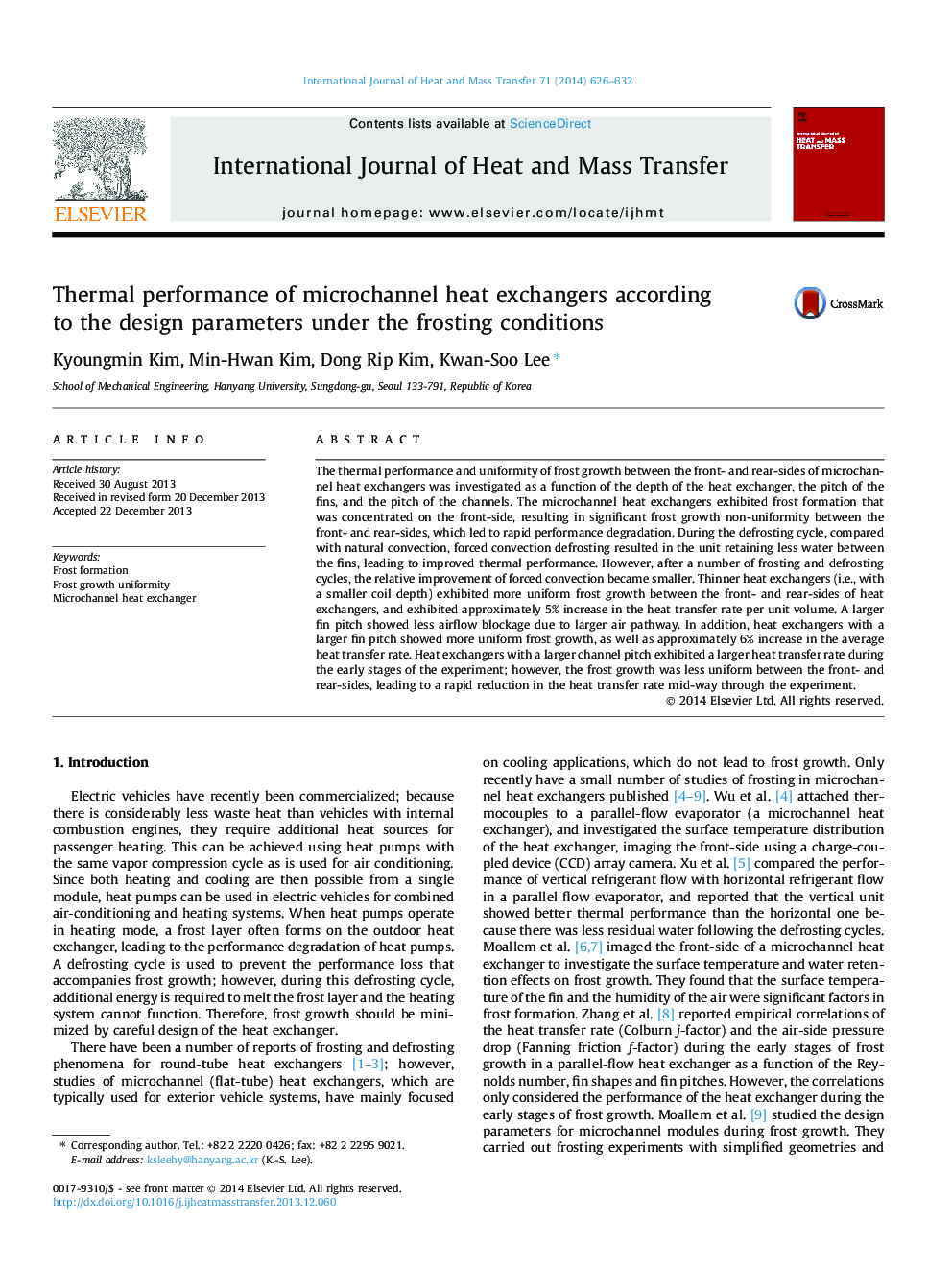| Article ID | Journal | Published Year | Pages | File Type |
|---|---|---|---|---|
| 7057744 | International Journal of Heat and Mass Transfer | 2014 | 7 Pages |
Abstract
The thermal performance and uniformity of frost growth between the front- and rear-sides of microchannel heat exchangers was investigated as a function of the depth of the heat exchanger, the pitch of the fins, and the pitch of the channels. The microchannel heat exchangers exhibited frost formation that was concentrated on the front-side, resulting in significant frost growth non-uniformity between the front- and rear-sides, which led to rapid performance degradation. During the defrosting cycle, compared with natural convection, forced convection defrosting resulted in the unit retaining less water between the fins, leading to improved thermal performance. However, after a number of frosting and defrosting cycles, the relative improvement of forced convection became smaller. Thinner heat exchangers (i.e., with a smaller coil depth) exhibited more uniform frost growth between the front- and rear-sides of heat exchangers, and exhibited approximately 5% increase in the heat transfer rate per unit volume. A larger fin pitch showed less airflow blockage due to larger air pathway. In addition, heat exchangers with a larger fin pitch showed more uniform frost growth, as well as approximately 6% increase in the average heat transfer rate. Heat exchangers with a larger channel pitch exhibited a larger heat transfer rate during the early stages of the experiment; however, the frost growth was less uniform between the front- and rear-sides, leading to a rapid reduction in the heat transfer rate mid-way through the experiment.
Related Topics
Physical Sciences and Engineering
Chemical Engineering
Fluid Flow and Transfer Processes
Authors
Kyoungmin Kim, Min-Hwan Kim, Dong Rip Kim, Kwan-Soo Lee,
